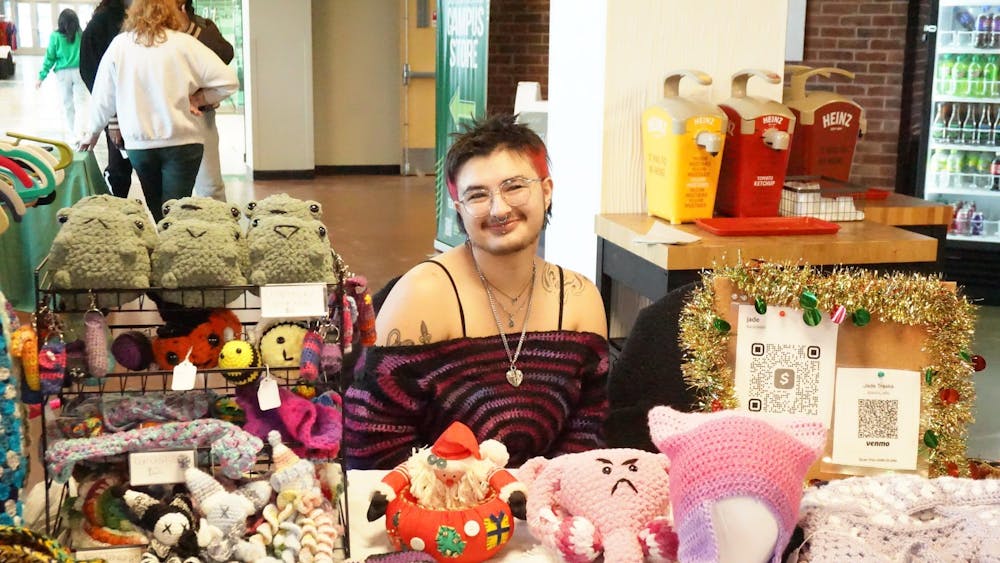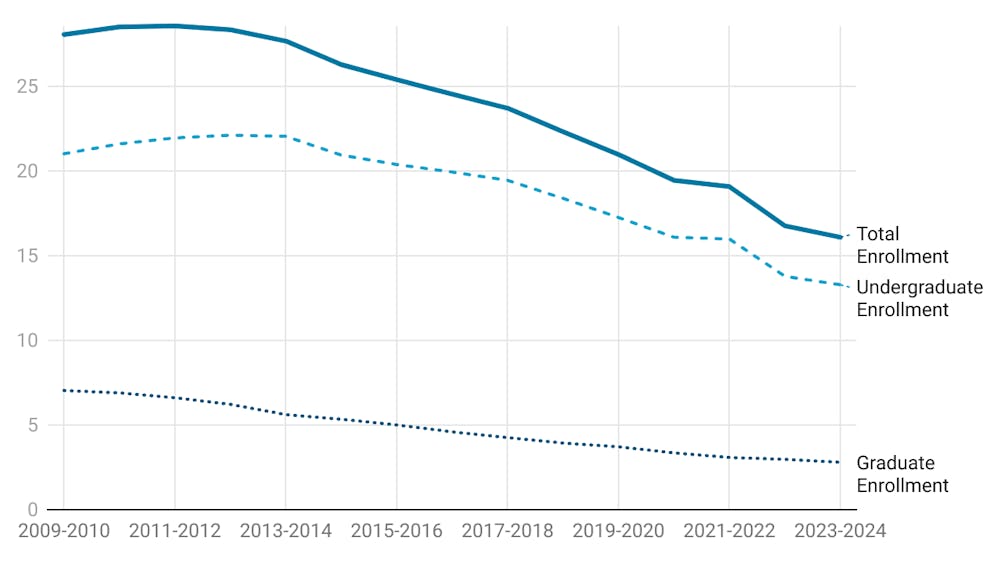Eastern Michigan University hosted a presentation about the River Raisin National Battlefield Park and how it was intertwined with the Wyandotte Native American Nation Thursday afternoon in the Student Center in honor of Native American Heritage Month.
EMU’s Native American Student Organization attended the event with concerns about the relevancy and accuracy of what the presentation was going to be about.
EMU junior Amber Morseau, President of NASO, said she would have liked for the speakers to state how they are connected to the university.
“[I would like to know] why they specifically contacted Susan Martin to come to their reservation, why wasn’t it another university in the state of Oklahoma, and it makes me wonder if it was because of the connection between this university and the Wyandotte tribe, specifically because of the Huron mascot,” said Morseau.
Morseau said some of the questions that NASO members asked were glazed over, especially about cultural revitalization.
“I wanted to know more about what they are doing within the tribe to revitalize the language and culture,” said Morseau. “As a tribal citizen, I feel that culture and language is very important to us, and something more should be done than just putting up a museum.”
EMU President Susan Martin said the objective of the event was to learn more about Native American history and the tribes themselves.
“It’s all about education and history,” said Martin. “We just want to be good friends with the Wyandotte Nation and support educational efforts about what happened in history.”
According to Martin, the presentation helped students understand the history of this country and EMU’s goal to work with the Battlefield Foundation to develop educational materials so that future generations learn a more accurate story about Native Americans.
Scott Bentley, superintendent of the River Raisin National Battlefield Park, said the national battlefield park that EMU helped to create has a very important history behind it. A key part of the history of the new national park is the War of 1812 and that it occurred in this area as a Civil War involving many tribal nations.
“One of our jobs and challenges with telling the history of southeast Michigan through the River Raisin National Battlefield Park is to fully understand that history through an American Indian perspective,” said Bentley. “We’ve been very honored and privileged to partner with the Wyandotte Nation of Oklahoma and the Wyandot of Anderdon Nation and beginning to understand that history means.”
In 2009, Ted Ligibel, director of EMU's Historic Preservation program, had received $20,905 from the National Park Service to research and document the boundaries of the Raisin River Battlefield.
Bentley said each tribe has its own story. He said it is a journey trying to fully understand the events that happened in southeast Michigan and how they formed multiple nations, including Canada, and multiple tribal nations that are within the United States.
“Our journey began for us here in Detroit,” said Bentley. “It took us to the Flat Rock reservation, it took us to the upper Sandusky area, to Kansas City and ultimately to Oklahoma.”
Ted Roll, chief of the Wyandot of Anderdon Nation, said although he took over as chief in 2010, he was not raised as a Native American. He said when his father was growing up, boarding schools were taking Native American children away from their parents to try to break their culture and language.
“It wasn’t just me. It was our whole tribe that went through that because it’s all one family, basically,” said Roll.
Billy Friend, chief of the Wyandotte Nation of Oklahoma, said an important historical event was the Battle of Brownstown that took place in the War of 1812. He said Brownstown was founded by Adam Brown, who was his grandfather four times removed.
“He [Adam Brown] was captured by the Wyandotte Indians,” said Friend. “The Wyandotte Indians were one of the more humane tribes of that time. They did not kill their prisoners, but many times they would take them in and adopt them into the tribe. Adam Brown was adopted into the tribe as an Indian and then married a Wyandotte woman and had Wyandotte children, and that’s how I got here today.”
Friend said there are 566 federally recognized tribes in the United States. He said each tribe has their own trail of tears.
“We have 5,821 tribal citizens,” said Friend. “Our citizens are scattered nationwide from the East Coast to the West Coast. We have approximately 1,200 Wyandotte citizens who live in the state of Oklahoma. We have approximately 800 citizens who live in what the government has defined as our tribal jurisdiction today or what they call our service area.”
Friend said the Wyandotte Nation is nation within a nation.
“We [Wyandotte Nation] carry dual citizenship. I’m a citizen of the Wyandotte Nation, and I'm also a citizen of the United States,” said Friend. “We operate our tribal government just like the state of Michigan would operate their tribal government.”
Graduate student Michelle Lietz, Vice President of NASO questioned Friend’s commitment to the next generation.
“I just don't understand how somebody who claims to be doing so much for their nation, for their tribe, would just gloss over something that is so detrimental to the next generation,” said Lietz. “It doesn't make a whole lot of sense to me, especially when the next generation is sitting there telling him that this hurts, it’s bad.”
EMU sophomore Rebecca Luth, member of NASO, said she appreciated the event and the attempt to bring the community together, but she said not all of the history they presented was accurate.
“Some of the things he [Chief Ted Roll] said like, ‘You can only belong to one tribe,’ are not true; you can be adopted into a tribe. There have been political figures that have been adopted into tribes,” said Luth.
Luth said the presentation didn’t include any information about what's happening locally. She said local tribes have been struggling to be recognized, which can take up to 35 years.










